- 20 April 2022
- 1 comment
- 2 views
Hemp is cannabis - thinks most and the first association brings to mind cannabis. And it is all a bit more complicated than that. because not all hemp is cannabis. Hemp is commonly divided into fibre hemp (industrial hemp) and cannabis hemp (marijuana), but this division is not entirely correct. From a purely biological point of view, they are simply slightly different varieties of the same plant, namely cannabis sativa. And where do the differences lie? Everything will be explained in detail below.
Seed hemp, fibre hemp and cannabis - basic information
Hemp is a species of plant in the hemp family. In addition to them, this family includes echinacea and hops, among others.
Hemp is called seed (sativa) and it is within this species that subspecies or varieties are distinguished, which were formerly considered as distinct species:
- Cannabis sativa subspecies (variety) sativa - fibre hemp
- Cannabis sativa subspecies (variety) indica - cannabis (marijuana)
- Cannabis sativa subspecies (variety) ruderalis - wild hemp
In the simplest terms, in purely plant terms, cannabis is simply one plant with three varieties and over 700 strains. The composition of some is dominated by THC, others will be dominated by another important cannabinoid - the CBD. The distinction between fibre and cannabis is certainly important for legal reasons. The former are legal in Poland, while possession of the latter is criminalised.
It is the case that fibre cannabis is generally a subspecies of Cannabis sativa, which has low THC but high CBD. In contrast, cannabis, contrary to popular belief, can be derived from both Cannabis Indica and Cannabis Sativa. And it all depends on which corner of the world they come from, and they can differ both in appearance and in the concentration of cannabinoids and terpenes they contain, as well as in their therapeutic purpose.
As for Cannabis Ruderalis, it is a variety of cannabis that grows wild and is mainly used for crossing strains and creating hybrids, as they have a particular ability to self-flower.
Hemp seed
The Latin name for seed hemp is Cannabis sativa L. and it is a species of plant in the hemp family with distinctive leaves that everyone is familiar with and aromatic inflorescences. And it is to this species that fibrous cannabis as well as cannabis indica belong, and although this is often the case, the term 'cannabis sativa' should not be used to refer only to fibrous cannabis.
If anyone uses prescription medical cannabis then they are well aware that the packaging states: "cannabis flowers Cannabis sativa L." and not "medical marijuana" or "cannabis flowers".
In simplest terms: all hemp is cannabis, but not all cannabis is fibre hemp and not all cannabis is cannabis (marijuana).
Fibrous hemp
Fibrous hemp is otherwise known as industrial hemp and is the common name for the Cannabis Sativa L, var. Sativa variety. In this variety, the THC content can be 0.2% or 0.3%, and this depends on the law of the country. In Poland, it is 0.2%.
The very name of these hemp plants indicates that they are grown primarily for the extremely strong fibres they offer. They were cultivated as early as 10,000 years ago. It was and still is a raw material used for food, clothing, rope, paper or building materials. It has been discovered that hemp biomass is excellent for producing cheap and environmentally friendly fuel.
In a nutshell, it is from the fibre hemp (which is also a seed hemp) that the production of CBD oils.
Cannabis (marijuana)
Cannabis is defined as all cannabis in which the THC content exceeds (depending on the country) 02% or 0.3%.
So if a variety of cannabis contains CBD at 12% but at the same time the THC level is, say, 1%, it is already considered cannabis, or colloquially speaking it is cannabis.
Indian, as this variety was discovered growing in the mountain ranges surrounding India, Pakistan and Afghanistan. The plants were lower than previously known hemp, more massive and richer in resins. India was also the place where this hemp was commonly used for both ritual, recreation and medicinal purposes.
In contrast, the name 'cannabis' was already created in the United States in the 1920s for the purpose of fighting minorities. But that is another story altogether. The name is still widely used today.
Fibre cannabis versus cannabis - key differences
One species, but there are quite a few differences between fibre cannabis and Indian cannabis. And this is true in terms of appearance as well as the abundance of inflorescences and the question of purpose. It is worth knowing these differences. Especially with regard to the properties and effects. It is also good to familiarise yourself with the legal status of cannabis in Poland.
Fibrous hemp and hemp seed - differences in appearance
At first glance, you can see that the two plants are visually different. Significantly enough that even a layman can easily tell them apart.
Fibrous hemp:
- grow up to 5 m in height;
- have long, extremely strong stems;
- have thin leaves;
- most inflorescences grow at the top of the plant;
- they can be grown very close together without yield loss.
Cannabis:
- grow up to 1.5 m in height;
- depending on the variety (sativa or indica), they can look more like a shrub or a tree;
- have broader leaves;
- The inflorescences are covered with a thicker layer of resin and their structure is more compact than that of fibre cannabis;
- For better yields, they are planted at correspondingly greater distances than fibre hemp specimens;
- in order to maximise the yield of inflorescences, the males are separated from the females.
Fibre cannabis and hemp seed - differences in THC and CBD content
It is the concentration of THC in cannabis that prompts it to be called fibre cannabis or cannabis (marijuana).
The law is clear on this - all cannabis with THC content up to 2% (e.g. in Poland) or 3% (e.g. in the Czech Republic) is fibre hemp, and anything above that is cannabis. Cannabis can contain between 1 and 3% of THC.
In contrast, fibre hemp tends to have more CBD in its composition. Most often, at the legal concentration of THC, CBD levels do not exceed 10%, and most often oscillate between 4-6%. However, if the THC level reaches 1%, the CBD rises all the way up to 12%, but then it is already cannabis in the eyes of the law, although it has no psychotic effects.
Fibrous hemp and hemp seed - differences in effects
As it is mainly the flowers that contain cannabinoids, the active substances that have an effect on the body, it is these that we will focus on here.
Fibrous hemp flowers:
- are richer in CBD;
- contain traces of THC;
- substances derived from them are calming, relaxing without having a psychotic effect,
- have a health-promoting and therapeutic effect.
Cannabis flowers:
- THC content produces intoxicating effects and, depending on the dose, influences the intensity of changes in cognitive function;
- Medical users use cannabis to control symptoms or as an adjunct therapy for chronic diseases;
- Recreational users speak of euphoric sensations, increased appetite, physical relaxation and improved mood.
Fibre hemp and hemp seed - legal status
Cannabis, or marijuana, is banned in most countries around the world. Only Canada and Uruguay allow the use and cultivation of cannabis across the full spectrum. Israel is expected to join them soon. We are of course talking about recreational users. Also 16 US states have legalised the use of cannabis. European states also allow its use to a greater or lesser extent, if only by not criminalising its possession or by allowing the possession of small quantities and the cultivation of one to a few bushes for personal use.
In Poland, it is only legal to possess medicinal cannabis, i.e. cannabis purchased from a pharmacy with a prescription. Possession for recreational purposes is simply punishable by prison.
As for fibre cannabis, on the other hand, as mentioned above, if it contains up to 0.2% or 0.3% THC, it can be used legally in most countries of the world. Sometimes this is not the case with CBD supplements.
Fibre hemp seeds are not banned anywhere, as they do not contain cannabinoids.











Adam
Excellent article. Topic exhausted. Dzk